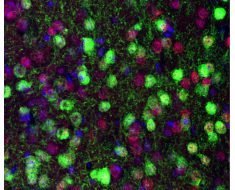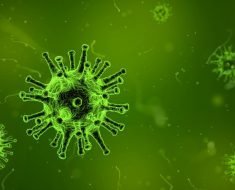By activating a single type of neuron, scientists triggered hot-flash-like symptoms in mice. In the July 10 issue of Cell Reports, researchers show that so-called Kiss1 neurons in the hypothalamus that project to a brain region controlling body temperature may be the link between sex hormone fluctuations and the hot flashes that plague many menopausal women.
“Because these neurons are conserved in humans and by all accounts perform similar functions in humans as they do in mice, this gives us specific evidence about how hot flashes are likely to be generated,” says co-author Christopher Johnson, a neuroscience graduate student at the University of Washington (UW).
In humans, hot flashes can affect both genders in response to rapid decreases in sex hormone levels.
“Hormonal states such as menopause and prostate cancer treatment that give rise to hot flash susceptibility are very complex,” says co-author Stephanie Padilla, a postdoctoral researcher at the UW School of Medicine. “That we were able to reliably generate such a robust physiological response by manipulating one population of sex-hormone-sensitive cells in a specific region of the brain validated a decade of research by groups investigating this phenomenon.”
The most prevalent treatment in the US for hot flashes is estrogen replacement therapy, which has been tied to an increased risk of stroke, blood clots and heart attack. This work identifies a neurological target for drugs that might prevent hot flashes from occurring and supports an ongoing clinical trial in Europe based on this approach.
Johnson, Padilla, and colleagues working in the laboratory of biochemist Richard Palmiter, a professor of biochemistry at the University of Washington School of Medicine and a Howard Hughes Medical Institute investigator, genetically engineered mice and viruses to manipulate Kiss1-expressing neurons. Activating Kiss1 neurons initiated a fast boost in skin temperature followed by a drop in core-body temperature. The same symptoms occurred in male and female mice. Removing the female mouse’s ovaries exacerbated the effect.
The researchers speculated that in females, carrying offspring to term may require an ability to modulate body temperature that is related to, but separate from, circadian body temperature.
Whether the Kiss1 circuit is an independent pathway linking body temperature to the reproductive system or just one facet of a larger network of temperature-regulating circuits remains to be established, the researchers write.
Source: Read Full Article





